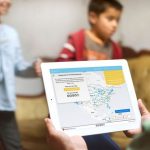 Autism is a condition that affects a great many people around the world, but the level of expertise is not spread equally, therefore leaving many sufferers without the support they crave. A Stanford team are attempting to improve matters by recruiting the crowd to help them identify where such gaps may exist.
Autism is a condition that affects a great many people around the world, but the level of expertise is not spread equally, therefore leaving many sufferers without the support they crave. A Stanford team are attempting to improve matters by recruiting the crowd to help them identify where such gaps may exist.
The project, known as GapMap, aims to recruit families and caregivers of those with autism to show both where they live but also where services are available in their vicinity. Early data from the project highlights how people living near autism facilities are more likely to have an accurate diagnosis, suggesting many with the condition are not diagnosed simply because of a lack of expertise to do so.
Perhaps unsurprisingly, the report goes on to reveal that there is generally a shortage in treatment centers in the United States for autism. Indeed, the average demand is 18 times larger than the available supply, with this figure rising.
“There is a growing imbalance between the number of people who need autism care and the number of places that can provide care,” the authors say. “It’s a geographic distance problem. We need to quantify, in real numbers, the geographic disconnect between people and treatment options so that we can see where the gaps are.”
Identifying the gaps
Existing data relies upon information from the U.S. Centers for Disease Control and Prevention, which itself is based upon data from just 11 states. What’s more, similar data gaps exist around the world.
GapMap began by trawling existing data sources with a web spider from the US and UK, with the data placed onto a heat map for both countries.
To improve upon this, the next iteration of the project will add additional functionality, such as layering environmental factors onto the map. They also hope to create a huge database of people with autism to allow families to both connect and participate in autism research.
“Our findings highlight that there is an important unmet need with respect to individuals in resource-poor areas, where there is a significant lack of autism services,” the team say. “As a consequence, we think they are getting diagnosed later and not reaching the care they need during the time when it matters most.”
Public contribution
This contribution by the public does not end with joining research projects. The team are also hoping that people will contribute to the database itself. Individuals with autism and their families can enter basic data about themselves into GapMap, such as their state, ZIP code, gender, birth date and autism diagnosis.
As they do so, they’re also asked several short questions about their autism, with the data stored in a secure, Health Insurance Portability and Accountability Act-compliant database.
In addition, each participant is invited to receive notifications around opportunities to participate in future research, whilst they can also see whether other autism sufferers live. The ultimate goal is to establish a detailed online community of families affected by autism, whilst also informing them of services in their area.
“We really need to see where the imbalances are and how big they are as the first step to creating change in the health care system,” the team say.